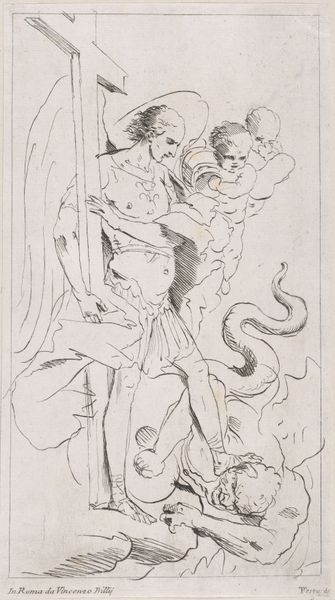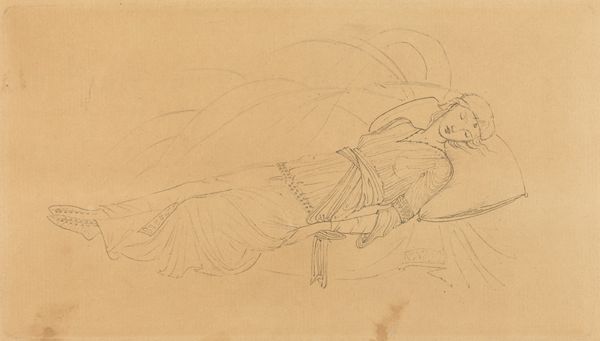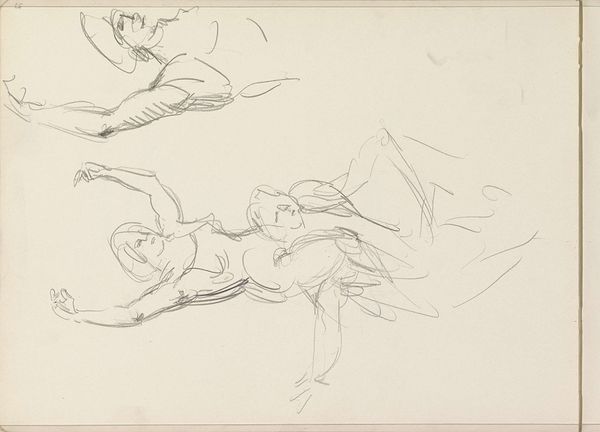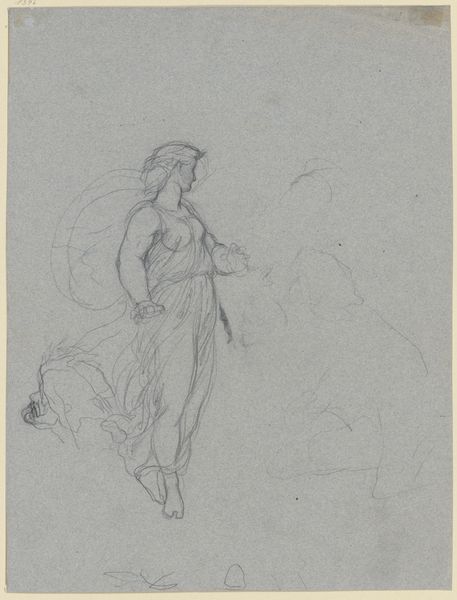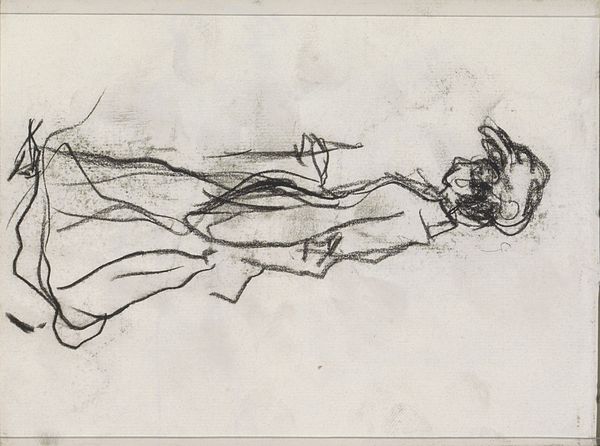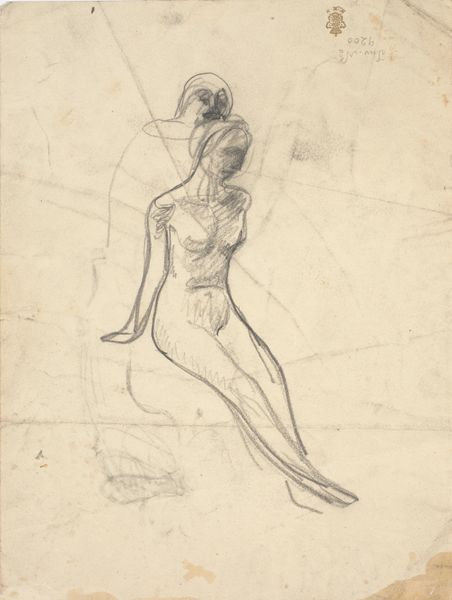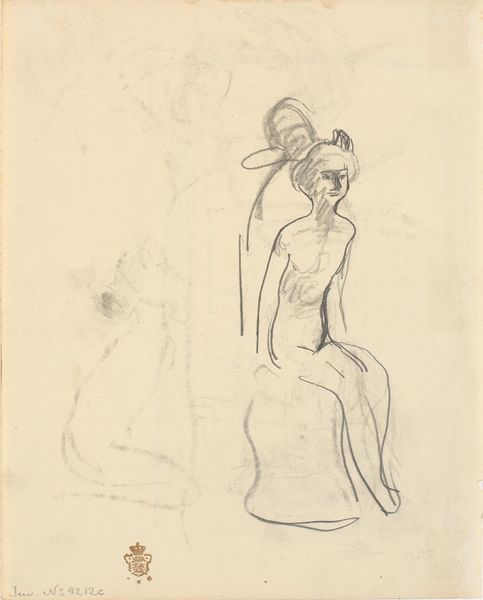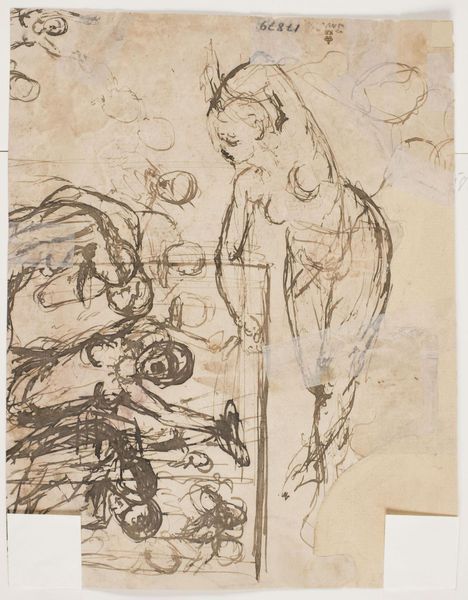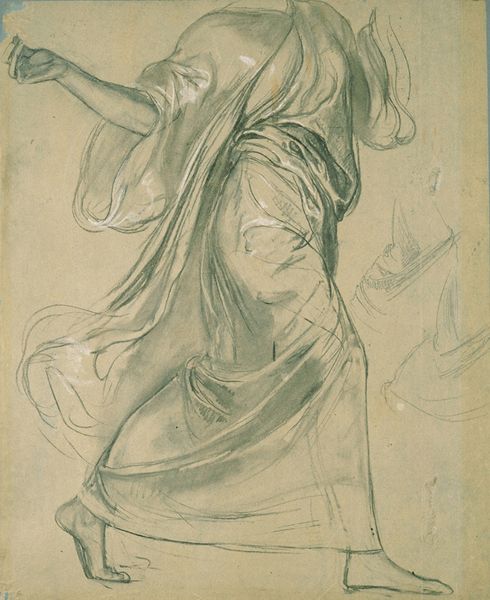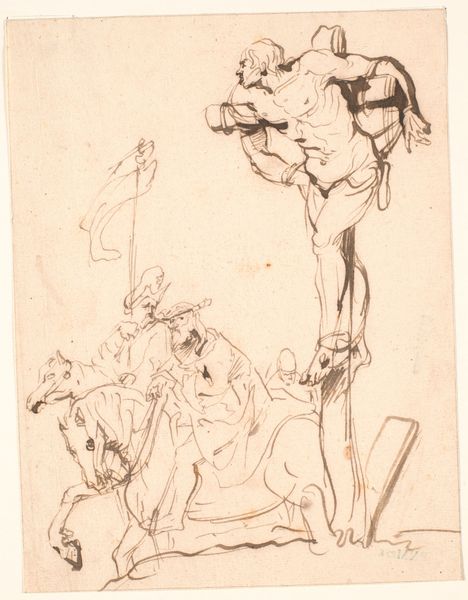
drawing, pencil
#
drawing
#
pencil sketch
#
figuration
#
pencil
#
realism
Copyright: Modern Artists: Artvee
Editor: So, here we have Gil Elvgren's "Play Refreshed, Coca Cola advertisement sketch" from around 1948, a drawing in pencil. It strikes me as idealized, even dreamlike. What stands out to you? Curator: Immediately, I see a potent combination of play and desire embedded in familiar imagery. The carousel horse, a classic symbol of childhood and innocent joy, carries this woman with such… exuberant energy. Note how her gaze is fixed, almost expectant, towards the proffered Coca-Cola. What emotions do you perceive beyond just happiness? Editor: Perhaps a sense of aspiration? This seems like a specific, carefully constructed fantasy. The soda bottle, for example, isn't just a refreshment, it's almost an enchanted object. Curator: Exactly! The Coca-Cola serves as a symbolic bridge between the mundane and the desired. The hand offering it is cropped, anonymous – almost archetypal. What universal narrative threads does that evoke? Editor: That idea of anonymous gifting…It reminds me of classic fairy tales, an offering of temptation or perhaps even transformation, like Snow White. Is Elvgren suggesting Coca-Cola as a magic potion in the post-war era? Curator: Consider the psychological impact of advertising during this period. It's not just about selling a product; it's about selling a lifestyle, a set of values and associations. The soda is visually linked with glamour, freedom, and a sort of carefree joy, presented for easy consumption. Elvgren tapped into the yearning for such feelings. Editor: It's fascinating to see how Elvgren weaves all these layers into something as seemingly simple as a Coca-Cola ad sketch. I will now look differently at advertisements, as containing narrative elements. Curator: Absolutely. It's a potent reminder of how deeply symbolic imagery can influence culture. I feel it is crucial to keep questioning what lies behind superficial pictures to have better vision.
Comments
No comments
Be the first to comment and join the conversation on the ultimate creative platform.
